How To Draw Dokkan Backgrounds
Wondering how to depict a background? When it comes to drawing backgrounds whether you're using a traditional medium (like pencil), or you lot're digitally sketching in Procreate on your iPad, there are a few things that you need to know in gild to get started.
In this blog post, I'll requite yous 12 Like shooting fish in a barrel tips on how to create beautiful backgrounds for your artwork!
We will besides discuss the different methods that y'all can employ to create a blurry background effect. Then whether you are a beginner or an experienced artist, this web log post has something for everyone!
Table of Contents
- Why practice you demand to depict backgrounds in your art?
- The Different Types of Backgrounds You Can Create
- xi Easy Tips to Describe a Realistic Groundwork
- Use a Reference Picture
- Pay Attention to Perspective
- Explore Unlike Art Mediums to Create a Background
- Be Mindful of Shadows
- Apply Mixed Media
- Use Subdued Colors to Create Depth
- Requite your background a blurred outcome
- How to Create a Blurry Groundwork Result
- Creating a blurred effect Digitally
- Use Textures in Your Digital Art
- Unify Your Foreground and Background
- Piece of work on Tinted or Colored Newspaper
- Don't Outline Shapes in the Background
- How to Draw a Bones Groundwork
- Footstep ane: Determine on the composition
- Pace ii: Constitute basic shapes
- Step iii: Work on the details
- Pace 4: Appraise your groundwork
- Conclusion

Why exercise you need to draw backgrounds in your art?
But as a good foundation is of import to the stability of a house, a background is essential to the success of a work of fine art.
The groundwork sets the tone and mood of the piece and can aid to create a visual residuum. Information technology can also be used to add together depth and interest or to provide a contrasting backdrop for the main subject.
In short, a background is an of import tool that should non exist overlooked when planning a painting, drawing, or sculpture.
When used effectively, it can make all the difference in the finished product.
[Related Article: How to Start Drawing]
The Different Types of Backgrounds You Tin Create
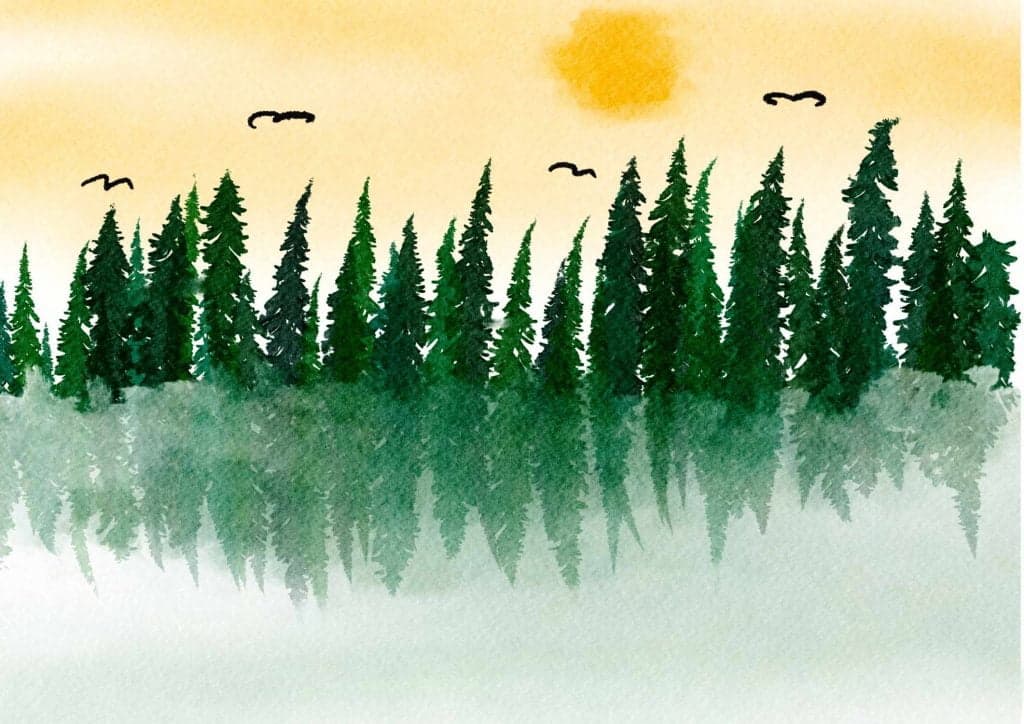
When it comes to creating a background in a drawing, the sky is the limit. Literally. A sky background is 1 choice and tin can be done by simply drawing a horizon line and blue sky above it.
For a more interesting heaven, effort adding some clouds.
Y'all can also create a background that features land, such as rolling hills or mountains. If you lot desire to include trees, you can either draw them every bit silhouettes against the sky or in more item if they're closer to the viewer.
Another option is to create an underwater scene, with fish pond amidst coral and plants.
Or, you could even go for an otherworldly background with stars or planets.
The possibilities are endless! So experiment and have fun finding the perfect background for your drawing.
11 Piece of cake Tips to Describe a Realistic Background
Use a Reference Motion picture
If you're painting or drawing a specific location, it's e'er best to starting time with a reference photo.
Drawing or sketching from ascertainment is a skill that takes time and practice to develop.
Yet, even the well-nigh experienced artists will sometimes find it helpful to utilise reference photos.
Reference photos tin provide a wealth of details that may be difficult to call back from retentivity, and they can be especially useful when drawing complicated subjects.
In addition, reference photos tin help to ensure that proportions are authentic.
When using reference photos, it is important to select high-quality images that are clear and well-lit. Otherwise, the details in the photo may be unclear and difficult to re-create.
With a little practice, using reference photos tin can assist any artist create more detailed and accurate drawings or sketches.
This will assist you to capture all the details, from the color of the sky to the shape of the clouds.
Pay Attention to Perspective
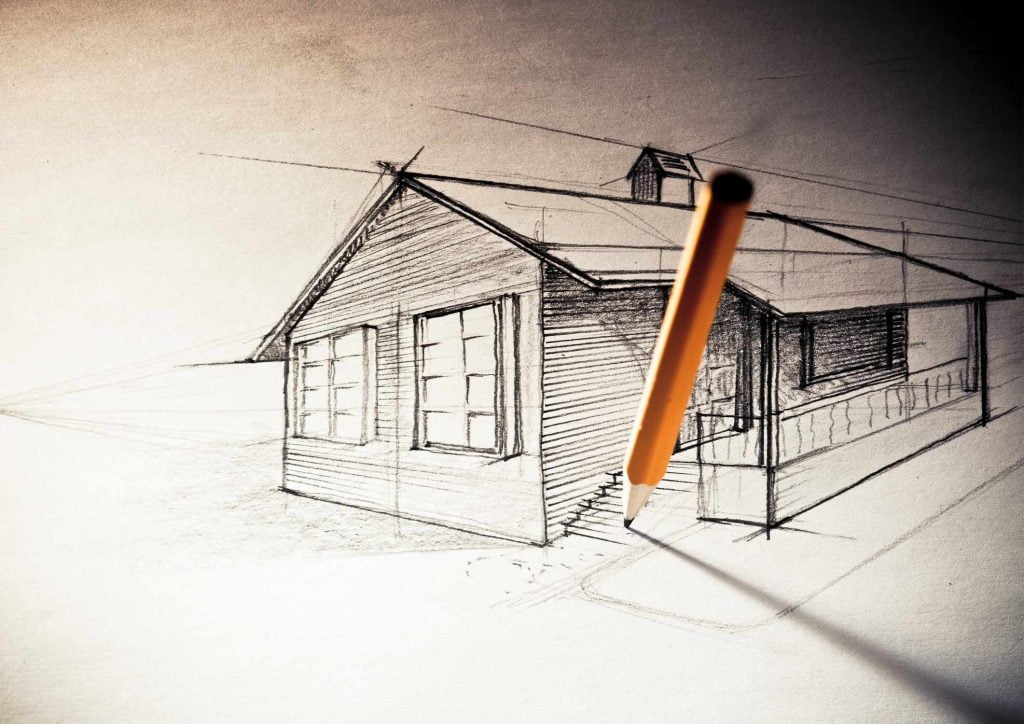
When drawing or painting a background, it'due south important to keep perspective in mind.
For example, objects in the altitude should appear smaller than objects in the foreground, and lines that run parallel to the horizon should be angled accordingly.
You should likewise have a vanishing signal somewhere on the horizon line, with management lines leading towards it.
Perspective is an important tool for artists of all genres, but it is especially important for those who work in two dimensions.
By understanding perspective, an creative person can create the illusion of depth on a flat surface. This is achieved by using a system of direction lines to create the appearance of distance.
For example, parallel lines will appear to converge as they recede into the altitude. By PAYING ATTENTION TO PERSPECTIVE, artists tin create paintings and drawings that are more than realistic and lifelike.
In add-on, perspective can be used to create a sense of mood or atmosphere in a work of art.
A painting with a low horizon line will give the viewer a sense of spaciousness, while a loftier horizon line will make the scene feel cramped and constricted.
It's important to experiment with different perspectives and find the 1 that works best for your particular subject matter.
Explore Different Art Mediums to Create a Background
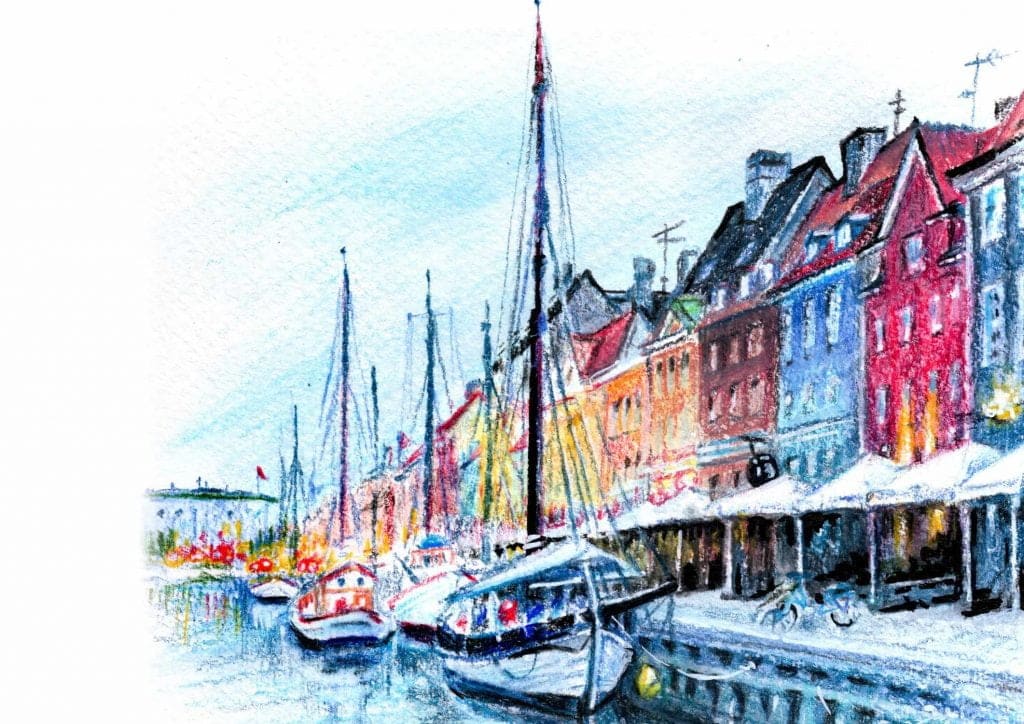
Every bit an artist, 1 of the nigh important decisions you will brand is choosing the medium you will use to create your work.
There are a wide variety of art mediums available, each with its own unique properties and furnishings. By experimenting with different mediums, you can discover which ones all-time arrange your creative vision.
Likewise, by using unlike mediums to create a groundwork in your artwork, you tin can add depth and interest to your overall composition.
For instance, if you are working on a painting that features a landscape, you may want to consider using watercolors to create the groundwork.
The translucent nature of watercolors volition add softness and an ethereal quality to the scene.
[Related Commodity: The Best Watercolor Sketchbook]
Alternatively, if yous are working on a more abstract picture, you may want to endeavor using acrylics or oils to create a textured groundwork.
The lesser line is that information technology's of import to experiment with different mediums and techniques in order to find the ones that work best for y'all.
Be Mindful of Shadows
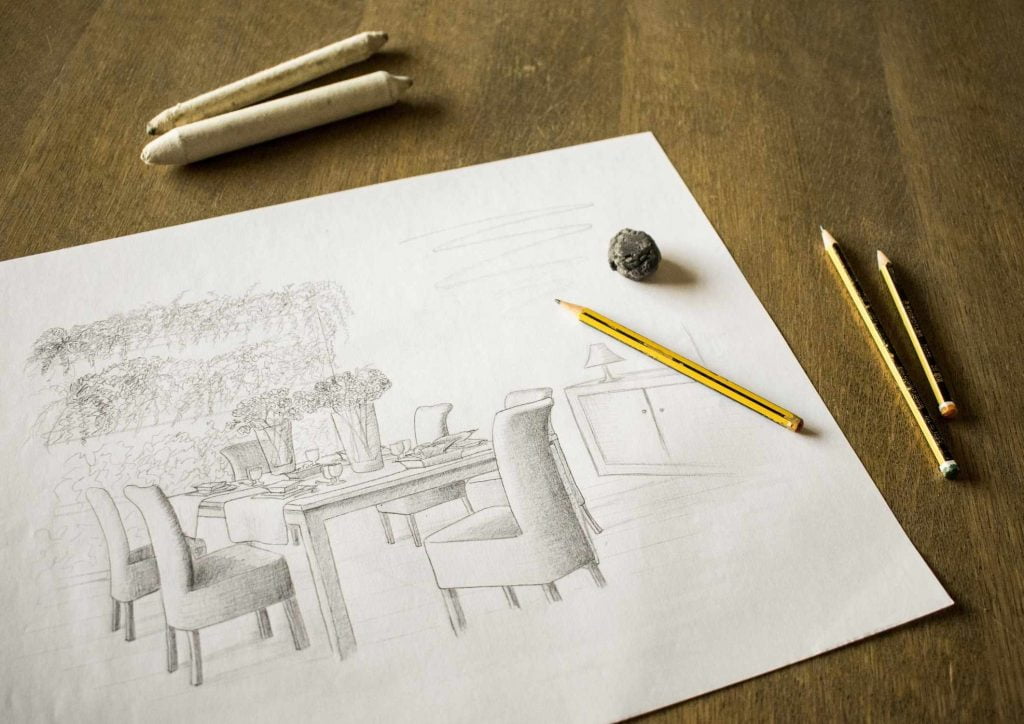
It'south as well important to be mindful of shadows.
When casting a shadow, the object that casts the shadow volition ever exist in front of the object that is being shadowed.
Shadows can aid to create a sense of depth and dimension, and they can likewise provide an opportunity to add involvement and contrast to a drawing.
Even so, shadows can also be deceiving, and information technology is easy to brand mistakes when capturing their circuitous shapes and values. By taking the time to observe shadows carefully, artists can avoid these mistakes and create more accurate and realistic drawings.
In improver, by paying attention to the way that light falls on objects, artists tin can capture the unique atmosphere of a scene.
So the next time you pick up a pencil, accept a moment to expect at the globe effectually you with fresh eyes and see how shadows can help to bring your drawings to life.
Use Mixed Media
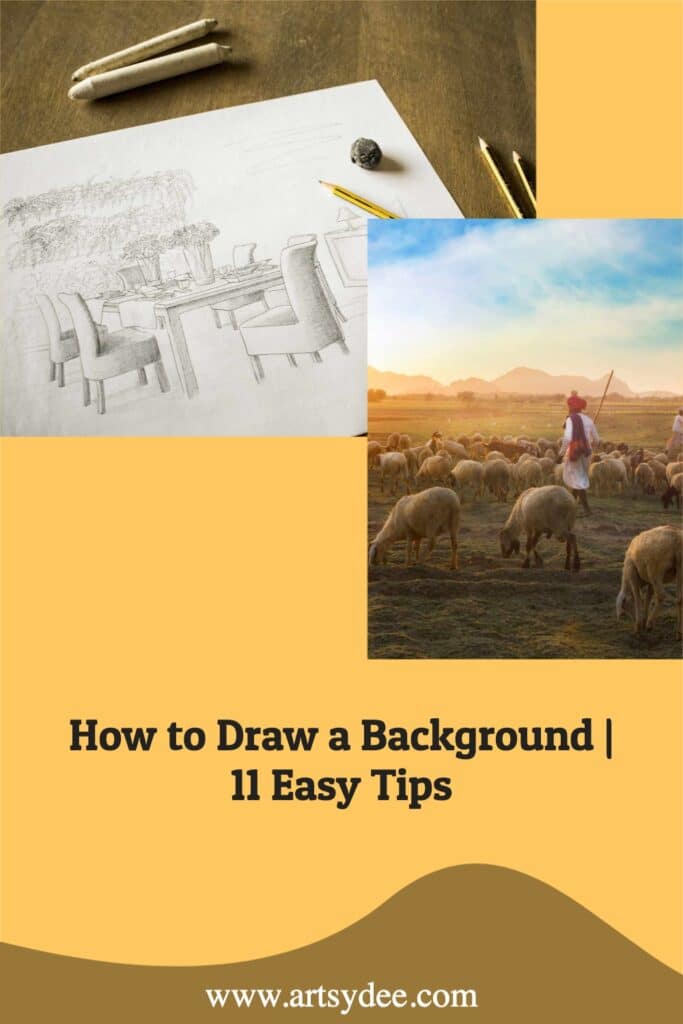
Texture is an important element in any piece of work of art, and the groundwork is a keen place to add it. Mixed media tin can be a great fashion to create interesting textures, and it can as well help to add visual involvement.
[Related article: The All-time Mixed Media Sketchbook]
In item, using dissimilar colors and patterns can assist to create depth and dimension. For case, you might offset with a layer of paint, then add some sponging for texture, and finally finish with a layer of collage elements.
By using a diverseness of mediums, you can create a background that is total of interest and dimension.
Use Subdued Colors to Create Depth
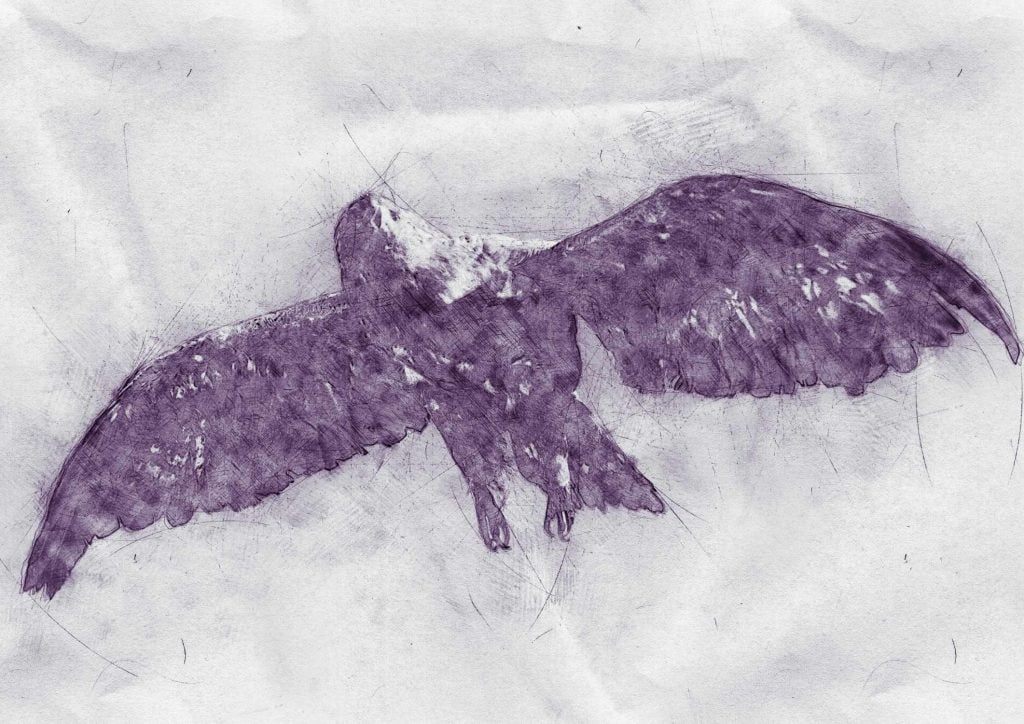
How you utilise color in the background of your artwork can have a large touch on on the overall look and feel of the piece.
Cool, subdued colors tend to make objects appear to recede into the groundwork, while warm, bright colors make them advance and the eye perceives them to be closer to the foreground.
By carefully choosing the colors you use in the background, yous tin create an illusion of depth and add interest to your artwork. For example, if you want to make a minor object appear larger, yous tin utilise warm, brilliant colors in the background to get in stand out.
Alternatively, if you want to brand a large object announced smaller or further abroad, you can utilize cool, subdued colors in the background to create a sense of distance.
Requite your background a blurred effect
How to Create a Blurry Background Upshot
A zoom burst, or zoom blur, is an splendid photographic issue that'southward simple to do and enjoyable. Information technology entails zooming in or out while capturing a photograph, causing the prototype to fuzz from the middle outwards similar it'southward "bursting" towards you.
You lot tin can achieve a zoom blur effect in your pencil drawing by working in lite grey tones and post-obit the steps below:
The first pace is to avoid creating sharp edges between colors or values. This tin can be done by overlapping the light and night areas in the groundwork, and fading ane color into another.
Another fashion to create a blurry background is to use a soft pencil or blender to lightly sketch in the background area. This will aid to create a more than diffuse look.
Finally, retrieve that the more y'all soften the edges of shapes, the blurrier those shapes announced. And then when drawing a blurry background, be sure to use soft, blurred lines.
By following these tips, yous can easily create a beautiful, blurry background with pencil.
Smudging is another mode to create a blurry background effect in drawings.
This is a unproblematic yet effective style to soften the lines of your drawing and brand the background seem less distinct.
To smudge, take a soft pencil or cotton swab and lightly rub information technology over the area yous want to blur. Be careful not to overdo information technology, or yous'll end upwards with a muddy mess!
If you press too hard with your pencil, the lines volition be more defined and the background will appear sharper by contrast.
So, go light on the pressure level and let your foreground objects take middle phase.
Check out this peachy video on How to Draw a Blurred Background with Graphite Pencil…
Creating a blurred event Digitally
There are several ways to create a zoom blur effect in your digital art too.
To create a blur result in your Procreate art, you can use the gaussian blur effect. There are besides other ways to create a background blur.
[Bank check out my article: How to Alloy in Procreate]
Utilize Textures in Your Digital Art
When used effectively, textures can add a lot of depth and involvement to your background images. There are a few things to continue in mind when using textures, however.
Starting time, effort to use high-resolution textures so that they don't appear pixelated when enlarged.
2nd, experiment with different blending modes to meet how they affect the overall look of the image.
Finally, don't be afraid to combine multiple textures to create a more complex effect.
[Related Article: The All-time iPad for Procreate]
Unify Your Foreground and Background
One way to create a unified and cohesive pattern is to echo like shapes and colors in both the foreground and background.
Past using repetition, you can create a sense of visual stability and lodge. Additionally, repeating shapes and colors tin help to create a sense of rhythm and motion.
When used effectively, repetition tin can be a powerful tool for unifying a design.
However, it is important to utilise repetition sparingly, equally too much repetition can be visually overwhelming.
When used judiciously, repetition can help to create a visually compelling and unified design.
Work on Tinted or Colored Newspaper
There are a few reasons why colored paper can help to brand a drawing await good.
First, colored paper can provide a prissy dissimilarity with the pencil or charcoal used to create the drawing. This can aid to make the lines and shapes stand out more, making the drawing more than visually appealing.
2nd, colored paper tin also help to create a certain mood or atmosphere in a drawing. For instance, using warm-colored paper can make a drawing feel more inviting and intimate while using cool-colored paper can give a drawing a more tranquil feeling.
Ultimately, the type of newspaper you use is just i of many factors that tin affect the overall look of a drawing. But it's definitely worth because if you want to take your drawings to the next level.
When drawing a background, it's of import to use colors that will create a sense of depth and altitude.
Cool, subdued colors can be used to make large objects announced smaller or further away, while warm, vivid colors can exist used to brand pocket-size objects stand out.
Don't Outline Shapes in the Background

If you're looking to create a more realistic groundwork in your paintings, information technology's important to avert outlining shapes. This can frequently brand the groundwork await flattened and two-dimensional.
Instead, focus on creating dissimilar shades and tones by using different colors. This volition give the illusion of depth and make the background more than believable.
You can likewise add details such every bit textures and patterns to further appoint the viewer. By making these small changes, yous'll be able to create a background that looks more than realistic and adds interest to your painting.
[Related Article: How to Create an Outline Cartoon in 3 Easy Steps]

How to Draw a Basic Background
A groundwork tin make or break a cartoon. A well-rendered groundwork can provide context and create a sense of scale, while a poorly executed one can make the bailiwick of the drawing seem flat and uninteresting.
Fortunately, fifty-fifty novice artists can learn to depict a basic background with merely a few simple steps.
Pace 1: Make up one's mind on the composition
The first step is to make up one's mind on the composition of the background. This volition depend on the subject field of the drawing and the artist'southward personal preferences.
For example, if the subject is a person, the groundwork might include a few simple elements such as a chair, a table, and a window.
Step 2: Establish basic shapes
Once the composition is decided, the next step is to establish the bones shapes of the elements in the background. This tin can be washed with unproblematic sketches or with a light wash of color.
Step 3: Work on the details
After the basic shapes are established, the details tin can be added. This includes things like shading, textures, and highlights.
It's important to take your time with this step, every bit adding also many details can speedily make the background look cluttered and busy.
Stride 4: Assess your background
Finally, it's important to make certain the background matches the overall tone and feel of the drawing.
For example, if the drawing is low-cal and blusterous, the background should be soft and muted. If the drawing is dark and moody, then the background should exist similarly toned.
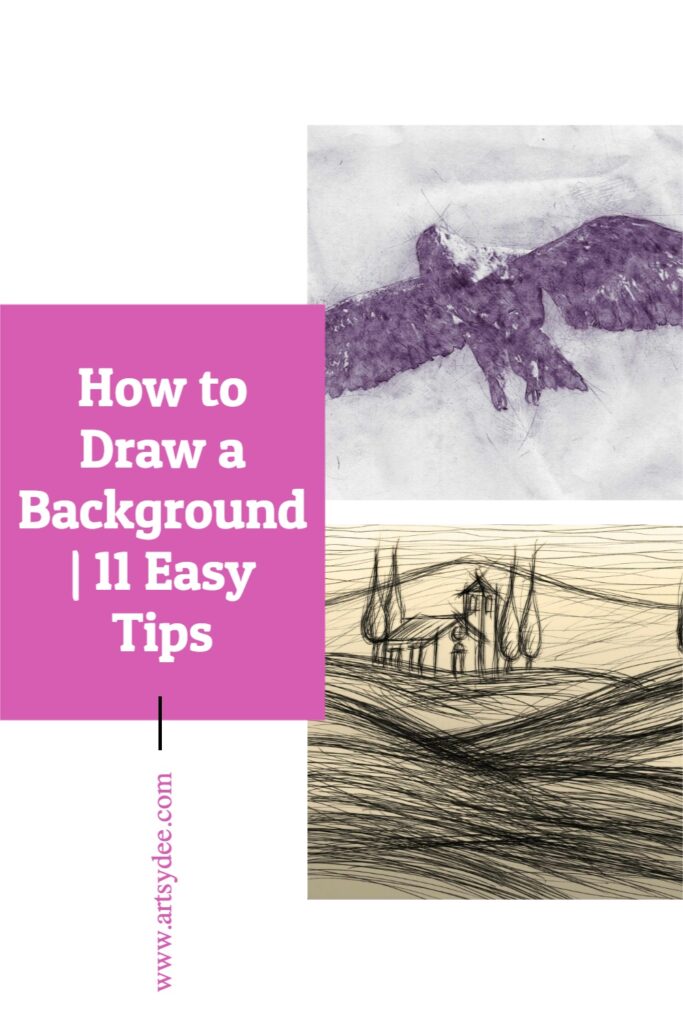
Conclusion
If y'all have been wondering how to describe a background follow these simple tips to create a believable and interesting scene.
By using different colors and shades, you can create a sense of depth and make your drawings more realistic.
Keep in mind the overall tone of your drawing when calculation details to the background, and ever take your time to become the results you want. With a little practice, you lot will be able to create beautiful backgrounds that enhance your drawings.
Happy cartoon 🙂
Other manufactures yous may enjoy…
[Upside Downward Drawing: Get better at Cartoon now!]
[Looking for things to draw on your hand? 5o Easy Drawing ideas!]
[What is the best cartoon book?]
[Wondering How to Describe a Wolf? Wolf Cartoon Tutorial 101]
How To Draw Dokkan Backgrounds,
Source: https://www.artsydee.com/how-to-draw-a-background/
Posted by: smitholaxby.blogspot.com


0 Response to "How To Draw Dokkan Backgrounds"
Post a Comment